Panasonic NN-DF386 Review
Panasonic NN-DF386
A high-end combi microwave-grill-oven that cooks brilliantly
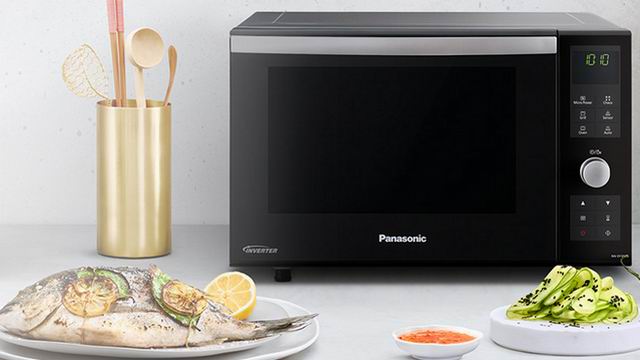
Verdict
Pros
- Excellent results
- Lots of programs
- Crisper pan
Cons
- Fairly pricey
- Not the fastest we've tested
Key Specifications
- Review Price: £234.00
- 1000W microwave
- 1000W grill
- Oven
- 310x483x396mm
- 23-litre capacity
- Flatbed design
What is the Panasonic NN-DF386?
The Panasonic NN-DF386 is a high-end combination microwave-grill-oven. It’s fairly pricey, but for your money you get an attractive, well featured do-it-all appliance.
We found that it delivered excellent results across all functions, but it’s slower than some microwaves: budget models are blunt instruments; the Panasonic offers precision.
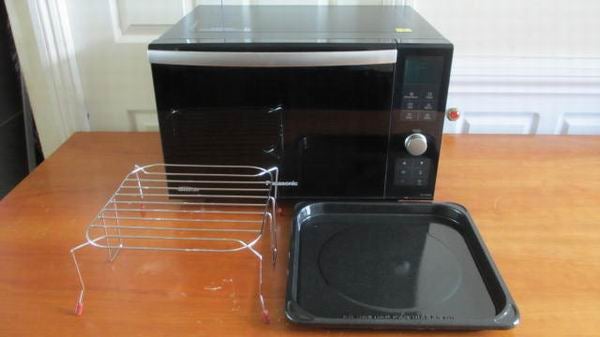
Panasonic NN-DF386 – Design and Features
The Panasonic’s black glass design is discreet and modern, and it features a pull-down door. It comes with a wire rack for grilling and a Pana-crunch pan – and enamel tray for use with the oven or grill. The rack is circular but the pan is rectangular and fills the full width of the appliance, sliding in like an oven shelf and maximising cooking space.
This, combined with an oven-style flatbed, means the NN-DF386 offers 30% more usable space, enabling you to fit in a wider range of dishes (casserole dish up to 23 x 35cm). The inside of the oven has an easy-clean fluoric coating and offers temperatures of 100-220°C.
You can microwave at six power levels: High, Defrost, Medium, Low, Simmer and Warm. Its microwave uses an inverter for precise control and even results. Most of these settings can be combined with the quartz grill, but there’s no combi-oven program. However, you can do two- or three-stage cooking – for example, defrosting and then cooking, or grilling and then microwaving.
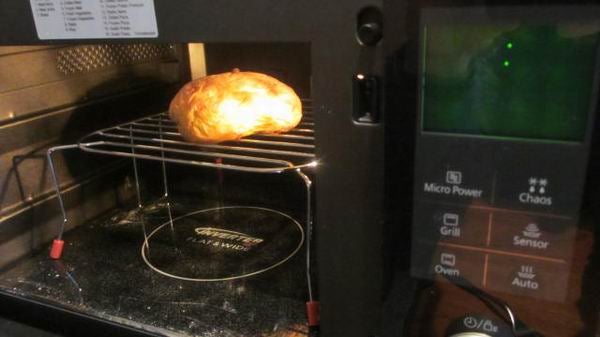
There are seven auto-weight programmes for popular foods: chilled quiche, frozen potato products, pastry items, chilled pizza, frozen pizza, gratin potato and gratin pasta. A sticker inside the door reminds you of the various programmes, so it’s easy to select the right one. Or cook using the Sensor programmes, in which case you don’t have to enter the cooking time, weight or power level.
Some of the programmes use the Pana-crunch pan, a metal tray that’s heated by microwaves to help you cook evenly in combination with the element at the top.
There’s a clock, a timer delay and a child-safety lock – but no kitchen timer. Cleaning is straightforward thanks to the flatbed design with a glass bottom.
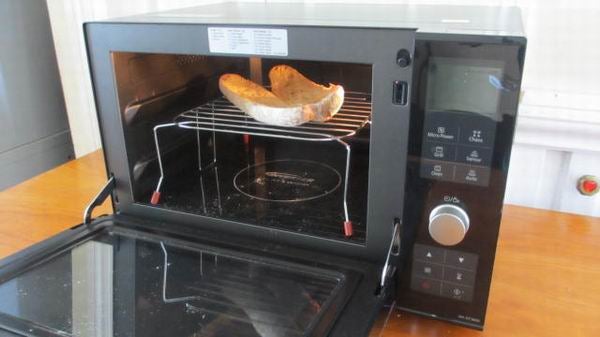
Panasonic NN-DF386 – What’s it like to use?
Microwave controls on the NN-D386 are straightforward: press the Micro Power button to select from what’s on offer. Then turn the knob to select the time in increments of 10 seconds. I used the microwave to defrost a pitta bread and found that 30 seconds did very little. It took a total of 1min 30secs to fully defrost it in the end. The results were impressive, however. Most microwaves actually warm the bread in the defrosting process, but the pitta bread from the Panasonic was defrosted but not at all warm to the touch – and it definitely wasn’t soggy.
Next I used the ‘frozen pizza’ auto-weight programme to cook a slice of pizza. The programme uses a combination of microwave and grill. It was a pleasant surprise that this cooks anything from 100g to 450g, so you can cook a slice or a whole pizza. The cooking time was just over nine minutes.
Cooking isn’t too loud and the interior is lit well enough that you can keep an eye on progress.
The results were pretty good, too. The pizza base was crisp, and the top was cooked well. But the back was cooked more than the front, resulting in a crunchy corner. A fair amount of cheese had dripped off, too – more than with some ovens.
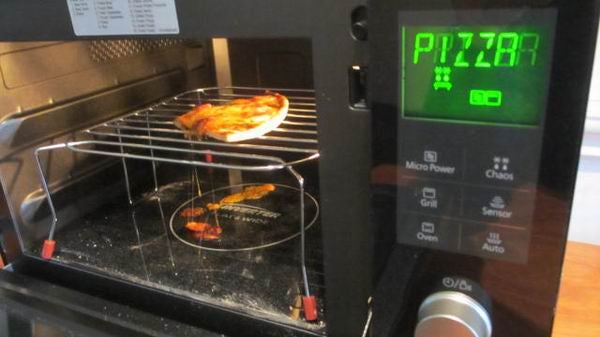
The grill, like the pizza programme, uses the supplied wire rack. We toasted a baguette on it and found that – again – the results were immaculately controlled but not the fastest on test.
Although there’s a handy sticker inside the door for reference, you’ll find yourself referring to the instructions to make the most of the Panasonic NN-DF386. It’s packed with recipes and detailed advice on cooking various ingredients and dishes.

For example, most combi microwaves don’t offer advice on how to use their combination cooking to make a great jacket potato, but if you pore over the instructions for the Panasonic then you’ll find that they recommend a combination of grill and microwave cooking on high power to crisp the skin. The controls for this are pretty intuitive: select the grill level, then microwave power, then cooking time.
My large (330g) potato took 13 minutes and was infinitely better than a microwaved spud: fluffy on the inside, with a fairly crisp skin. In terms of time and power consumption, it’s a very good compromise between microwaving and oven-cooking.
Despite the drops of molten cheese from the pizza, I found the glass floor of the Panasonic’s flatbed was easy to clean with a quick wipe.
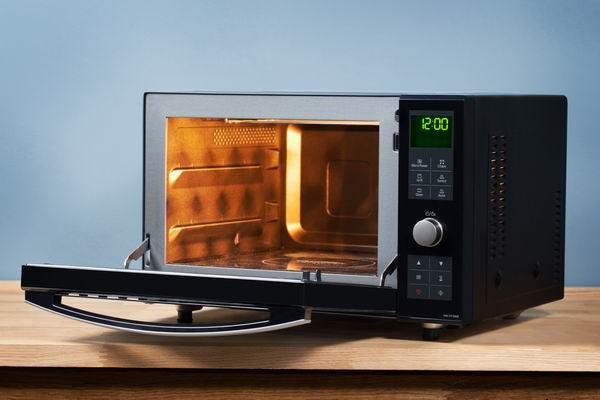
Should I buy the Panasonic NN-DF386?
It’s a little pricey but the Panasonic cooks precisely and offers a decent oven and grill to add valuable extra cooking space to your kitchen. I was super-impressed. If your budget will extend a little further then the Panasonic NN-DS596 adds steam cooking to the mix – but steam aside, I actually preferred the results from the NN-DF386.
If you’re on a tight budget or need something that takes up less worktop space then consider the microwave-only Beko MOF 20110.
Verdict
The Panasonic cooks food brilliantly; it may be a little slow, but with excellent results every time, it’s worth the money.


